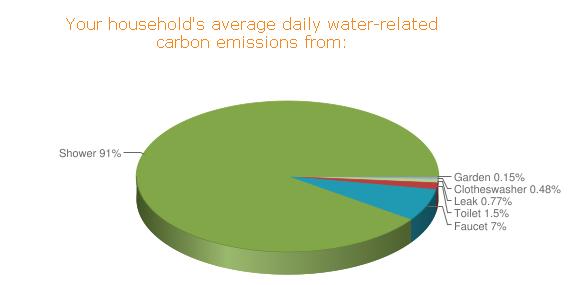 As climate models zoom in to the regional level, they may provide a sharper lens for viewing climate impacts–and even coping with them. Two interactive web tools — WECalc from the Pacific Institute and CalAdapt from the California Energy Commission — attempt to show how climate change hits home.
As climate models zoom in to the regional level, they may provide a sharper lens for viewing climate impacts–and even coping with them. Two interactive web tools — WECalc from the Pacific Institute and CalAdapt from the California Energy Commission — attempt to show how climate change hits home.
Water managers say that conservation will be critical in order to prevent future water shortages. WECalc, a “water-energy-climate calculator,” does a comprehensive analysis of your water use at home. The widget, from the Oakland-based Pacific Institute, highlights both the dollar savings and potential climate benefits from water conservation. Tethered to your zip code, the precise calculator includes the steps required to get water to your home and treat it. Heather Cooley, who helped develop the calculator, says the tool illuminates this behind-the-scenes process, which is called embedded energy. Cooley says “embedded energy is the energy required to deliver treated water to your home.” Zip codes that rely primarily on coal for electricity have a greater climate impact because of this process. At the end of the survey, you’re given suggestions on how to reduce your water footprint and carbon footprint. This report also includes a printable chart to estimate annual savings and a payback period to implement things like putting a jacket around your water heater. The old California phrase “If it’s yellow, let it mellow ” has a new dimension.
Meanwhile CalAdapt, rolled out last year to map climate change risks in California, is slated for an upgrade. The CEC recently awarded $550,000 to the California Institute for Energy and Environment at UC Berkeley to expand CalAdapt. The model pegs climate risks to a 7-by-7-mile grid, which is about the size of San Francisco.
“This model is unique,” said CEC Commissioner Anthony Eggert, in a recent phone interview. “The planning aspect of this tool is incredibly powerful for local, regional and state levels. It can be used to predict the potential for increased fire risk, energy loads for air conditioning use, and help farmers plan for future precipitation.”
The model is expected to be ready by November of this year.

One thought on “Climate Widgets on Your Home Computer”
Comments are closed.

Chris (& Anthony) – home-level climate change information has been available for 4 years now from http://www.ClimateAppraisal,com, it is not nearly so “unique”